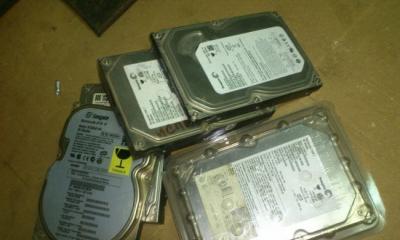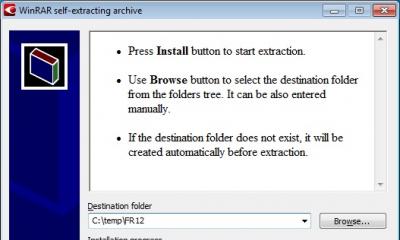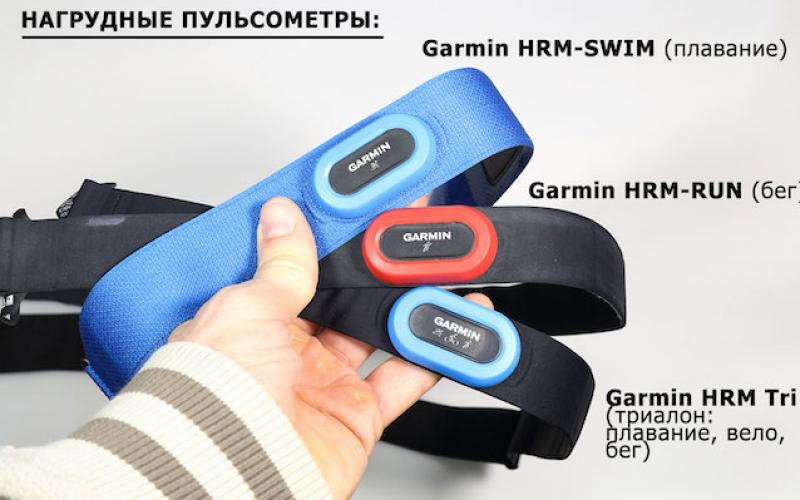Or at retail, but few people know that in some cases there is no need to buy it, since it won’t be difficult to get such a thing.
To obtain the desired result, you need to take a regular hard drive, which is equipped with any computer, but it must be non-working or outdated, since it will need to be disassembled.
Preparing to extract an element
In addition to the hard drive itself, for extraction you will also need a piece of ordinary A4 or A3 paper, a set of thin screwdrivers, an ordinary kitchen knife, and also some kind of box where you can put various detachable parts.
Removal procedure
The first step is to remove the cover of the device. To do this, you need to remove the jumper and unscrew several bolts, then peel off the stickers, under which, as a rule, several more bolts are hidden, which also need to be unscrewed. Next, the cover, which is not fixed by anything, can be removed without any problems, and the next item is the board, under which there is a head with neodymium elements. In order to remove the board, you need to turn the hard drive over and unscrew the bolts securing the board. Next, access to the target is open - metal plates with neodymium magnets are removed from the head, which will not be so easy to separate.
At first glance, it may even seem that they are glued or screwed to the plates, but this is not the case, and therefore, to overcome the force of attraction, it will be enough to use an ordinary kitchen knife, with which you can separate the plates from the magnets. When performing this seemingly simplest task, you cannot neglect the tenets of safety precautions, since you can cut your hand in an instant.
Advantages and disadvantages of neodymium elements from hard drive
The only drawback is the fact that the resulting elements cannot be used in all areas. For example, they certainly cannot act as an elegant souvenir, but they perform all other functions.
There are many advantages to neodymium magnets extracted from a computer hard drive, and the main one is cost, since most often it is completely free, since an old, useless hard drive has no value. You can rummage around in search of such a part or offer to get rid of it to your friends and acquaintances.
Use of neodymium magnetic products from hard drive
As mentioned earlier, mined magnetic products are unlikely to be suitable for gifts or souvenirs, but they retain all the properties characteristic of the neodymium-iron-boron alloy. Ultra-strength and resistance to demagnetization contribute to their wide range of applications. You can use them to search for metal objects, or you can save your family budget by stopping the counter using such a product. Mined elements are perfect for this, as they have sufficient power. In addition, the “catch” can be attached to the fuel line, which will reduce fuel consumption and, again, save money.
Thus, an old part can serve well and provide a very valuable part that can be useful in everyday life and save the family budget. The main thing is not to rush to throw away unnecessary things, but to think about whether they will be useful in the future?

Not everything is in the photo! Only those that I “sentenced” when I conceived this homemade product!
Some are out of order. Others are simply outdated. (By the way, there is a general trend towards a decrease in quality: modern hard drives fail quite often. Old ones, with one or two gigabytes (or even much less), are all working!!! But they can no longer be used - they have very little speed of reading information... And they have very little memory. So it’s not worth it.
But throwing it away - the hand does not rise! And I often wondered what could be made from them, or how to use them...
On the Internet, at the request “...from the hard drive” there are mainly “super-talented” ideas for creating a sharpener!!! People with a serious look show how to trim the case, cover the disk itself with sandpaper, and make a super-cool sharpener, powering it from a computer power supply, and using the hard drive’s own motor!
I haven’t tried it... But I think it will be possible to sharpen with such a sharpener... well, maybe nails!... And even then, if you don’t press too hard!!
And now, when I was doing this, I remembered that hard drives have powerful neodymium magnets. And since during welding work “there can never be too many squares,” then, upon completion of the last homemade project, I immediately disassembled one of the hard drives to see what I could operate with)))


The magnet (I pointed to it with a red arrow) is glued to a metal bracket, which, in turn, is secured with a screw.

Old hard drives had one or more massive magnet. There are two of them in the new ones. The second one is below:

This is what I got when I disassembled my disks:


By the way, the discs themselves also interested me. If anyone has ideas for using them, please share them in the comments...

To begin with, I decided to search the Internet to see if anyone had already invented this method of making welding angles?!)))
It turned out yes! We've already made these devices from hard drives! But there the man simply placed a wooden board between the metal plates, to which he screwed magnets. I immediately rejected this method for several reasons:
Firstly, the combination of “arc welding + wood” is not very good!
Secondly, at the ends of these squares a rather complex shape is obtained. And it will be very difficult to clean them! And he will take on a lot. Let me give you an example of a photo from my last publication. They have a weak magnet on them, and this one, after lying on the workbench where they worked with metal:


And thirdly, I didn’t like that the square had very wide ends. That is, when welding some structures whose components are narrower than itself, it cannot be used.
Therefore, I decided to go a different route. Make, like the “wooden” one, not the template plates of the case, but the end itself between them, but make this end smooth and closed.
In a previous publication, I already wrote that all magnets have poles, which, as a rule, for permanent magnets are located on wide planes. It is not advisable to “close” these poles with magnetic material, so this time I decided to make the side plates of the case from a non-magnetic material, and the end plate from a magnetic one! That is, “exactly the opposite”)))
So what I needed:
1. Neodymium magnets from old computer hard drives.
2. Non-magnetic stainless steel plate (for the housing).
3. Thin magnetic steel.
4. Blind rivets.
First of all, I started making the case. I had this piece of stainless steel sheet. (I don’t know the brand, but steel does not stick to a magnet).


Using a plumber's square, I measured and cut out two right-angled triangles with a grinder:


I also cut the corners of them (I forgot to take a photo of this process). Why cut the corners, I already said - so as not to interfere with welding work.
I made the precise adjustment of the corners manually on a piece of emery cloth spread along the plane of a wide profile pipe:

Periodically, I put the workpieces into the square and looked “at the light.” After the corners were out, I drilled holes for the rivets, connected the plates through them with M5 screws, and checked the corners again! (The requirements for accuracy here are very high, and when drilling holes, I could make an error).
Next, I started making the magnetic plate itself, which, as I already said, I want to place at the end of my square. I decided to make the thickness of the square 20 mm. Considering that the side plates are 2 mm thick, the end plate should be 16 mm wide.
To make it, I needed thin metal with good magnetic properties. I found it in the case of a faulty computer power supply:

Having straightened it, I cut out a strip 16 millimeters wide:



This is where the magnets will be placed. But here one problem arose: the magnets, having a curved shape, do not fit into the width of my plate....
(A little about the magnets themselves. Unlike acoustic speakers, hard drives use not ferrite, but so-called neodymium magnets. They have a significantly higher magnetic force. But, at the same time, they are more fragile - even though they are They look like all-metal, they are made of sintered rare-earth metal powder and they break very easily in the hard drive, which is already screwed on.)
I did not peel off the magnets from the steel plates - I only need one working plane from them. I simply cut off the protruding plates with a grinder, and a little of the magnets themselves.


In this case, a regular abrasive wheel (on steel) is used. Rare earth metals have the property of spontaneously igniting in air in a highly crushed state. Therefore, do not be alarmed - the “fireworks” of sparks will be much stronger than expected.
I remind you!!!
Permanent magnets are afraid of strong heat!! And especially - sudden heating! Therefore, when cutting, they MUST be cooled!
I simply placed a container of water next to it, and periodically lowered the magnet into the water after making a small cut.
So, the magnets are cut off. Now they fit on the strip.
Inserting long M5 screws into the holes for the rivets and securing them with nuts, I bent the following complex structure around the perimeter of the template plate:



It is on this that the magnets will be located inside:


Since the plate itself will be fixed only in places where the rivets pass through it, it will “spring” a little. That is, the magnets will attract it to the workpiece with its entire plane.
The next step is painting. There was no need to paint it. The stainless steel was decoratively polished, and the appearance was at a sufficient level.
But the fact is that in this case, painting is needed not so much for decorative purposes, but for practical ones: when working with metal, the square should not get lost among the many metal structures! Moreover, it can easily be accidentally carried away, stuck to the metal! That is why it should be bright in color.
“Destroying Myths” - this section is dedicated to the most common myths that have taken root in the world of information technology. The editors of the CHIP test laboratory will help you distinguish fiction from the truth.
Many people believe that if a regular magnet is placed near a computer or hard drive, it will lead to data loss.
Is it true.
This opinion spread when 5.25- and 3.5-inch floppy disks were widely used. The magnets really shouldn’t have been brought too close to these data carriers: even a distance of three centimeters was enough to destroy all the data. However, even neodymium magnets with a powerful magnetic field do not pose any danger to hard drives. Modern hard drives with a capacity of 1 TB or more consist of two to four plates coated with a magnetic layer based on iron oxide and cobalt. Information on the platters is located in small areas (domains) of the disk, which can have two states of magnetization - 0 or 1. Bits of information on modern HDDs are stored in vertical domains. This method, called perpendicular recording, allows you to store up to 19 GB of information on one square centimeter.

Magnetic fields Reading and writing data to the HDD is carried out by moving the head above the platter at a distance of only 10 nm. This element works as an electromagnet and creates a strong field, under the influence of which domains are magnetized.
Thus, it is magnetic fields that allow information to be written or erased in domains.
But why then does an ordinary magnet pose no danger? The fact is that the plates are so strongly magnetized that only very powerful fields with an induction of over 0.5 Tesla can negatively affect the operation of the HDD. Since the strength of the magnetic field decreases with distance from the object, already at a distance of a few millimeters it will drop to a negligible value. Therefore, magnets brought to the HDD are too weak to affect the information stored on the hard drive.
Even a neodymium magnet with an adhesive force of 200 kg at a distance of 10 mm from an object creates a field with a magnetic induction of only 0.3 Tesla. However, be aware that if a magnet is placed near a running hard drive, it may tilt the read/write head to the side or cause it to touch the platter. This is fraught with recording errors and, as a result, data loss.








